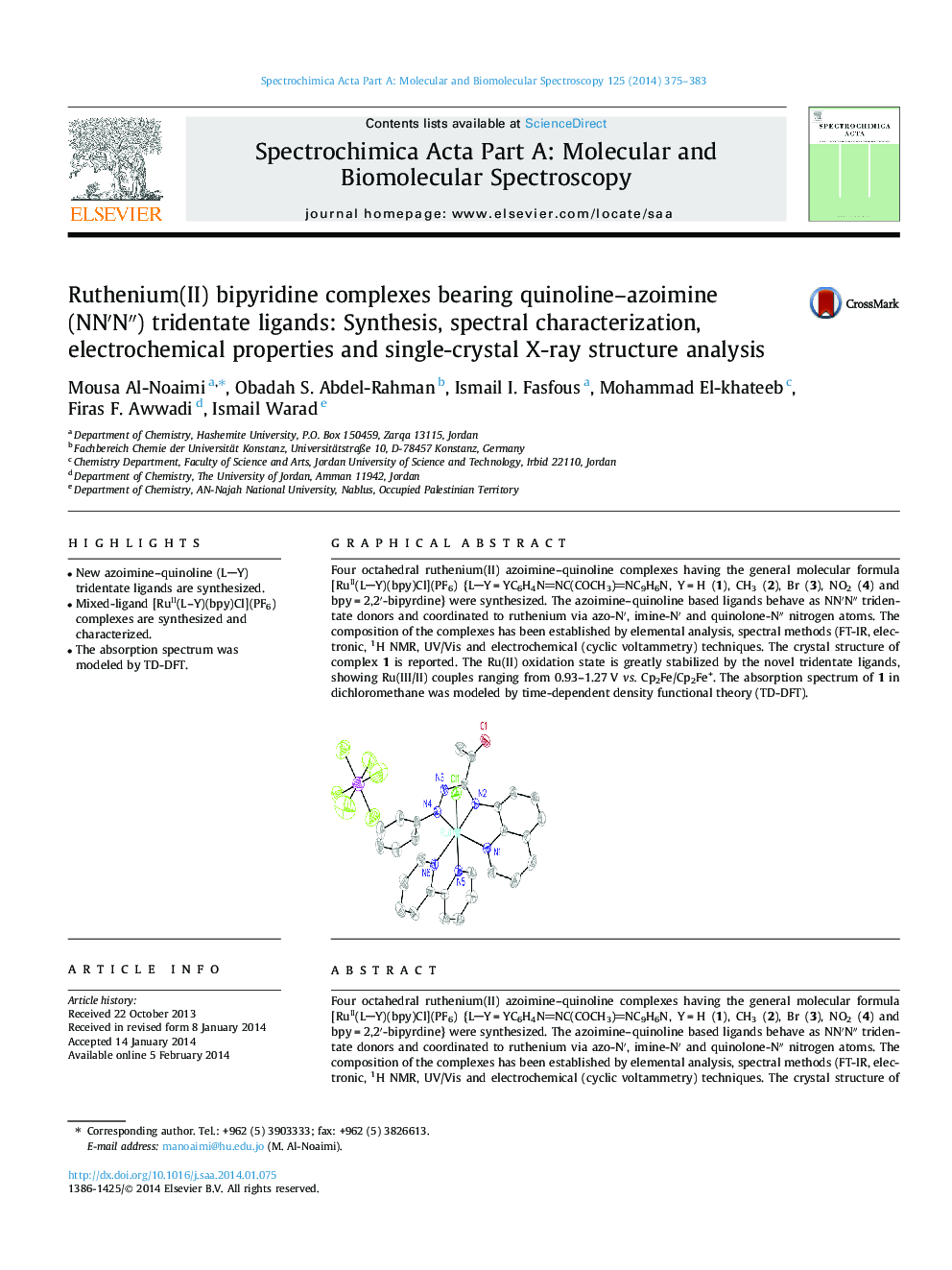| Article ID | Journal | Published Year | Pages | File Type |
|---|---|---|---|---|
| 1230193 | Spectrochimica Acta Part A: Molecular and Biomolecular Spectroscopy | 2014 | 9 Pages |
•New azoimine–quinoline (LY) tridentate ligands are synthesized.•Mixed-ligand [RuII(L–Y)(bpy)Cl](PF6) complexes are synthesized and characterized.•The absorption spectrum was modeled by TD-DFT.
Four octahedral ruthenium(II) azoimine–quinoline complexes having the general molecular formula [RuII(LY)(bpy)Cl](PF6) {LY = YC6H4NNC(COCH3)NC9H6N, Y = H (1), CH3 (2), Br (3), NO2 (4) and bpy = 2,2′-bipyrdine} were synthesized. The azoimine–quinoline based ligands behave as NN′N″ tridentate donors and coordinated to ruthenium via azo-N′, imine-N′ and quinolone-N″ nitrogen atoms. The composition of the complexes has been established by elemental analysis, spectral methods (FT-IR, electronic, 1H NMR, UV/Vis and electrochemical (cyclic voltammetry) techniques. The crystal structure of complex 1 is reported. The Ru(II) oxidation state is greatly stabilized by the novel tridentate ligands, showing Ru(III/II) couples ranging from 0.93–1.27 V vs. Cp2Fe/Cp2Fe+. The absorption spectrum of 1 in dichloromethane was modeled by time-dependent density functional theory (TD-DFT).
Graphical abstractFour octahedral ruthenium(II) azoimine–quinoline complexes having the general molecular formula [RuII(LY)(bpy)Cl](PF6) {LY = YC6H4NNC(COCH3)NC9H6N, Y = H (1), CH3 (2), Br (3), NO2 (4) and bpy = 2,2′-bipyrdine} were synthesized. The azoimine–quinoline based ligands behave as NN′N″ tridentate donors and coordinated to ruthenium via azo-N′, imine-N′ and quinolone-N″ nitrogen atoms. The composition of the complexes has been established by elemental analysis, spectral methods (FT-IR, electronic, 1H NMR, UV/Vis and electrochemical (cyclic voltammetry) techniques. The crystal structure of complex 1 is reported. The Ru(II) oxidation state is greatly stabilized by the novel tridentate ligands, showing Ru(III/II) couples ranging from 0.93–1.27 V vs. Cp2Fe/Cp2Fe+. The absorption spectrum of 1 in dichloromethane was modeled by time-dependent density functional theory (TD-DFT).Figure optionsDownload full-size imageDownload as PowerPoint slide
